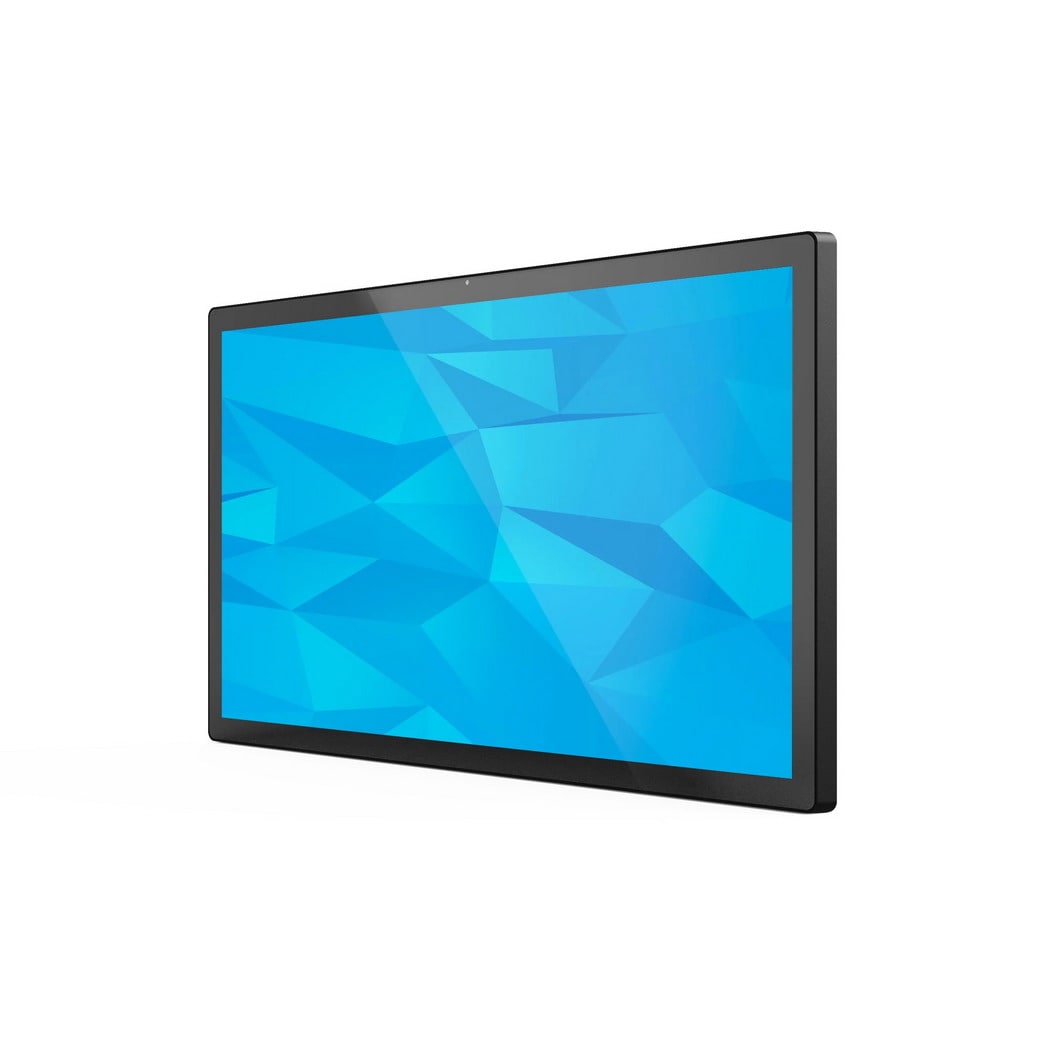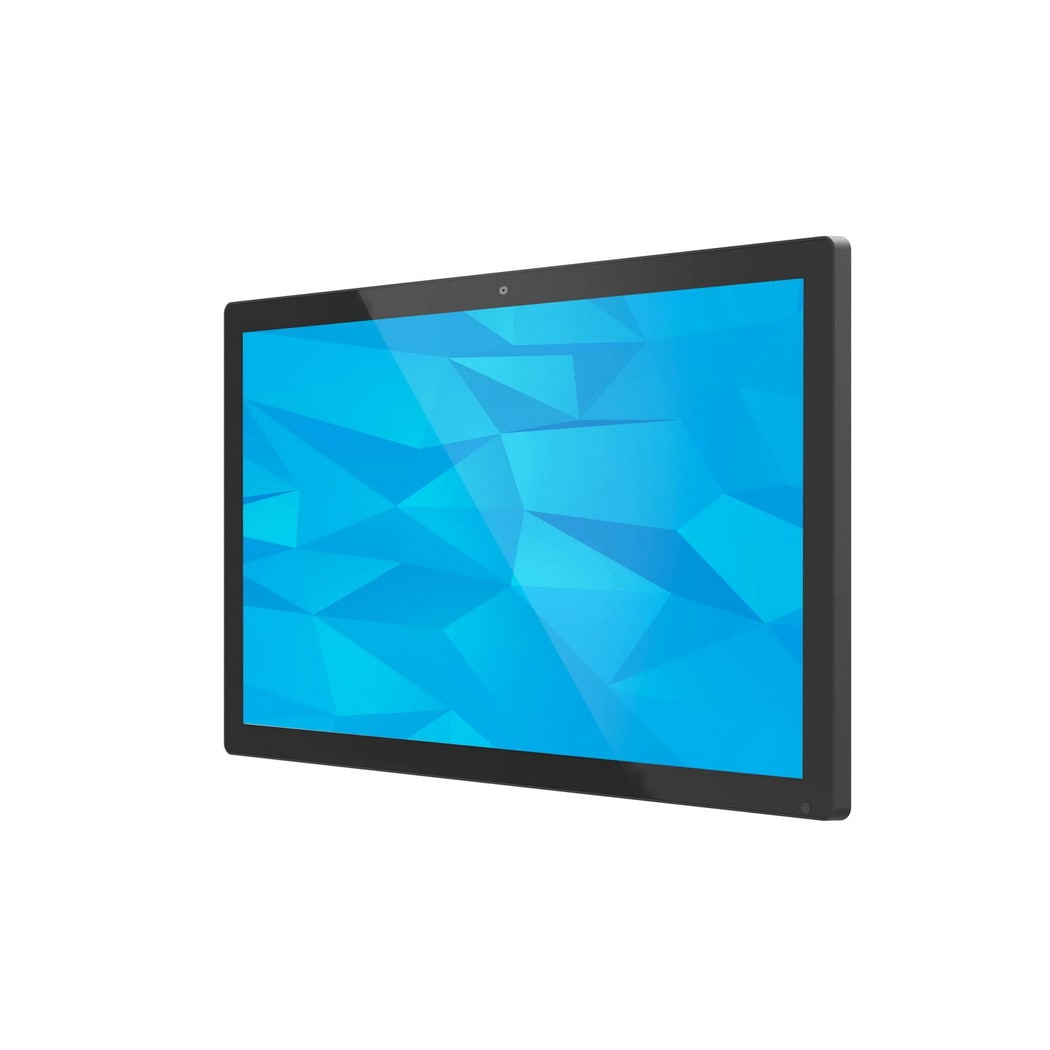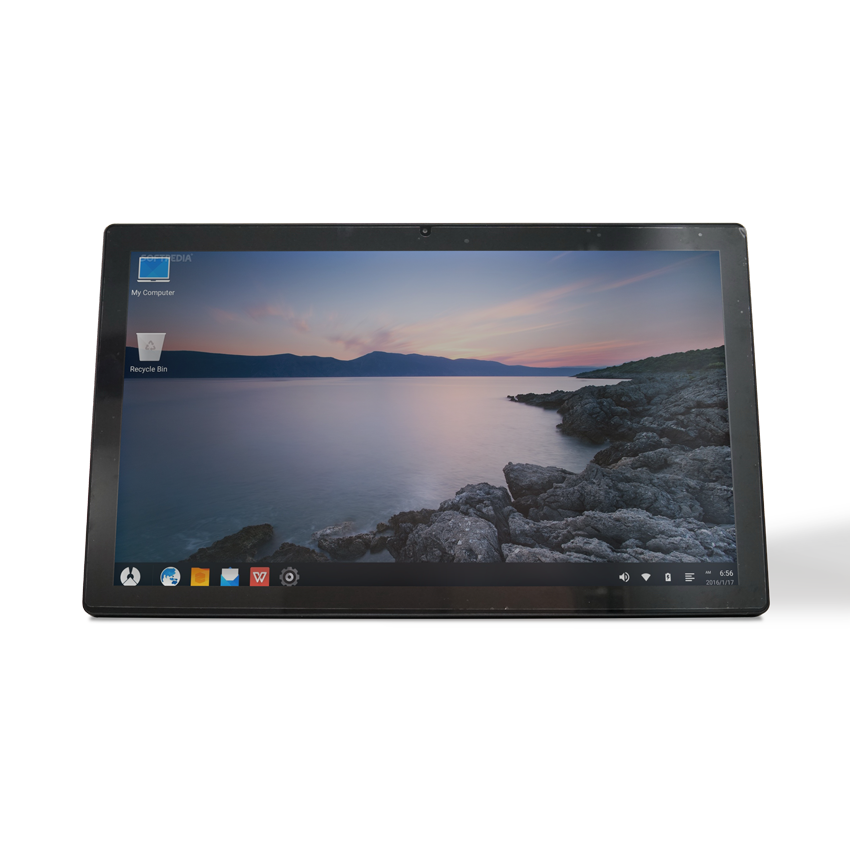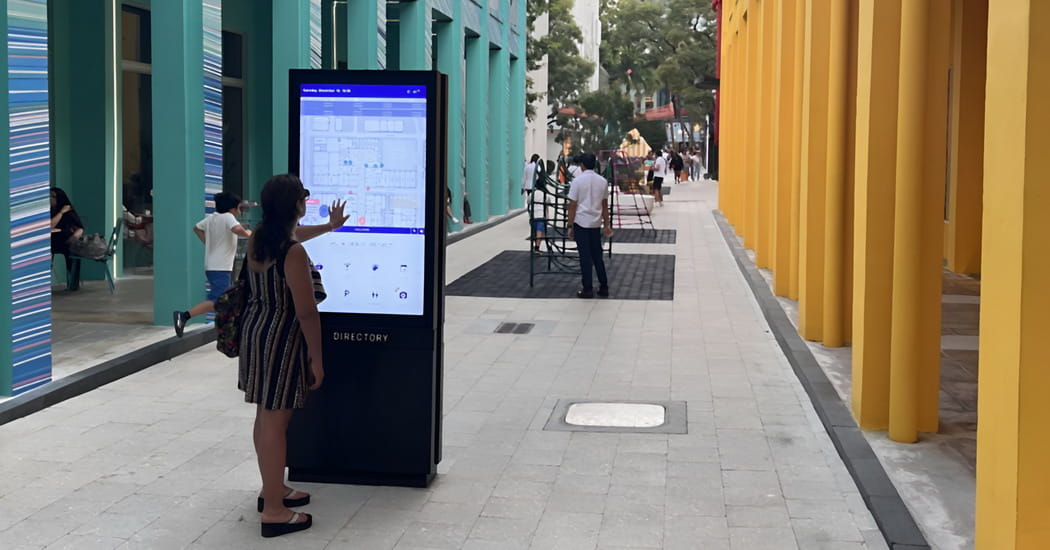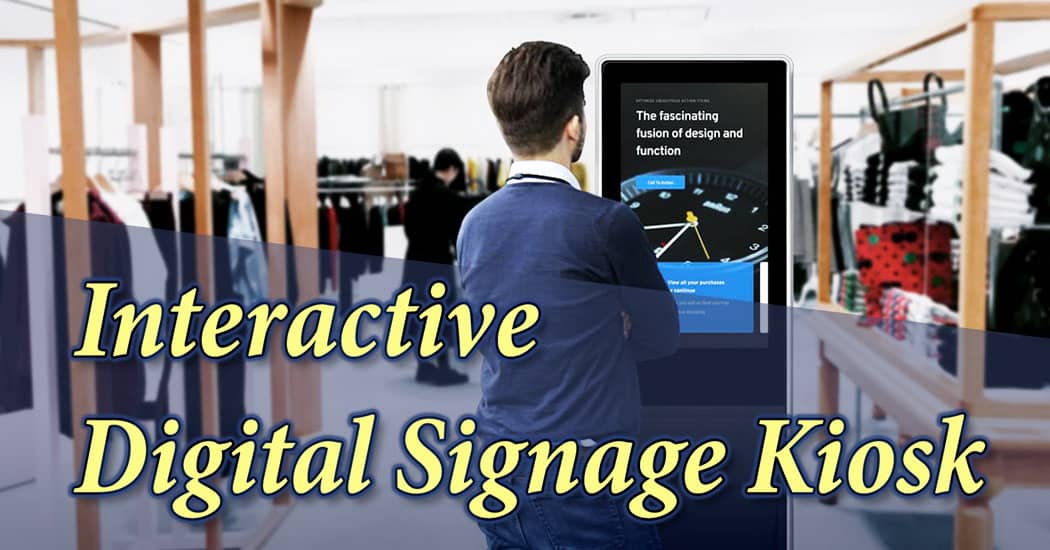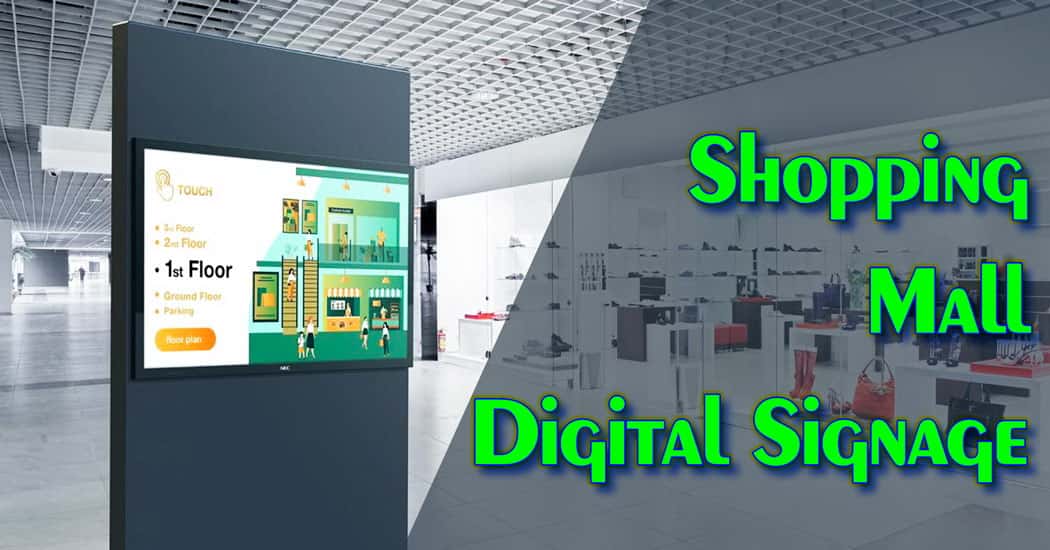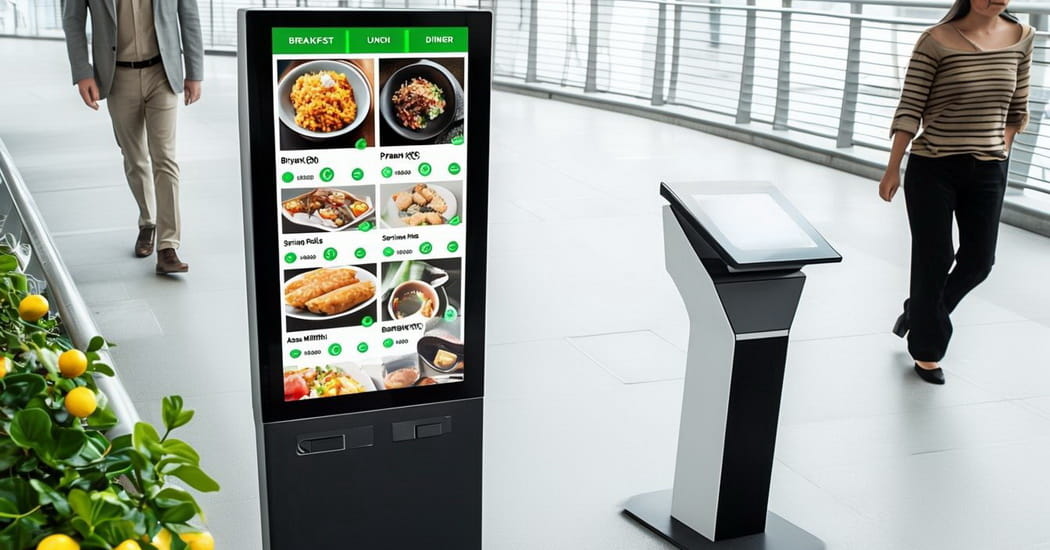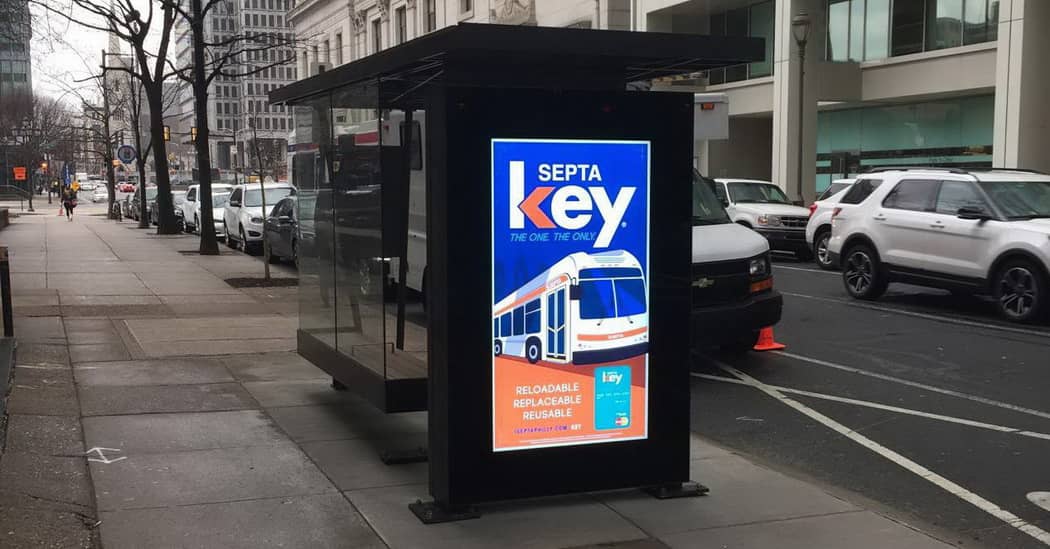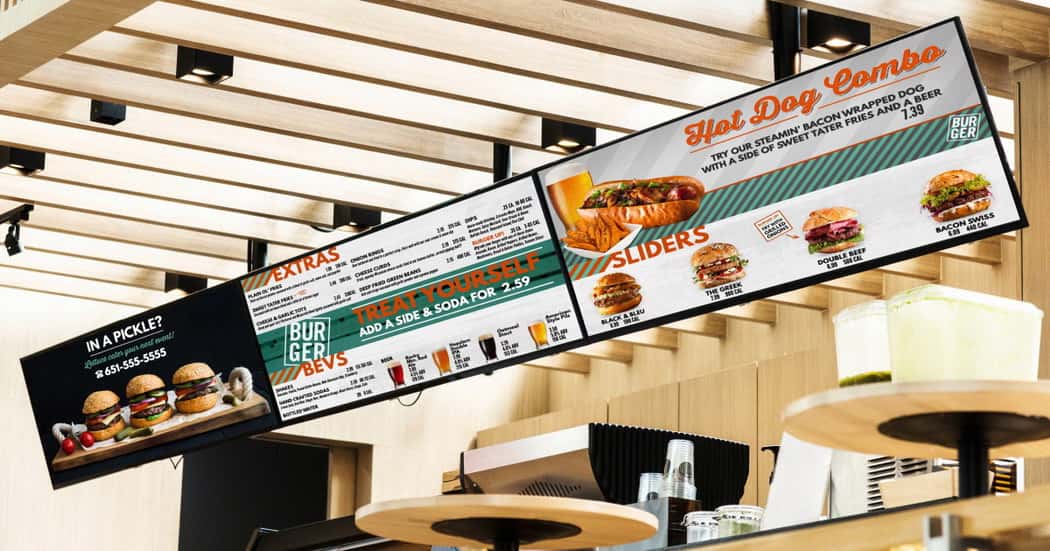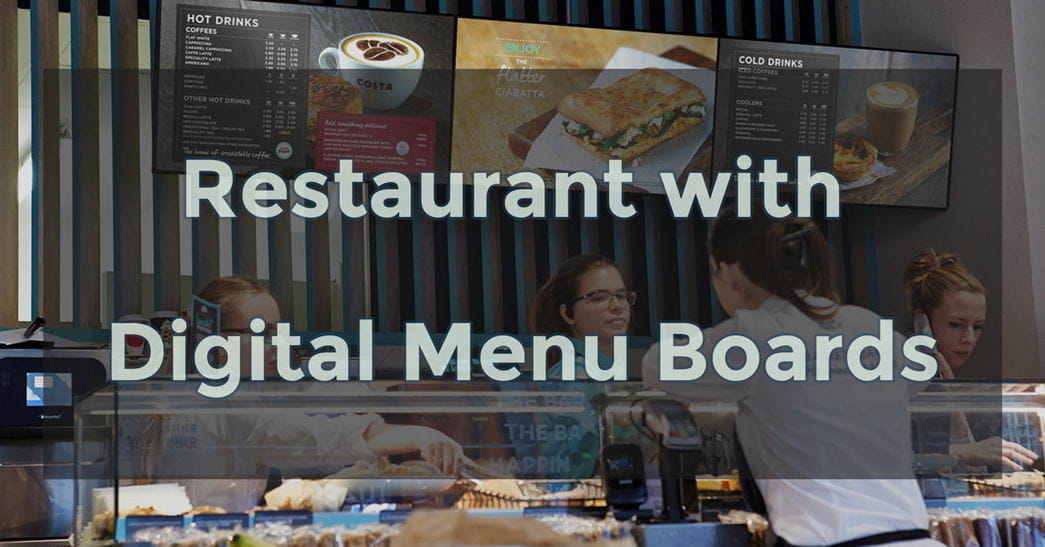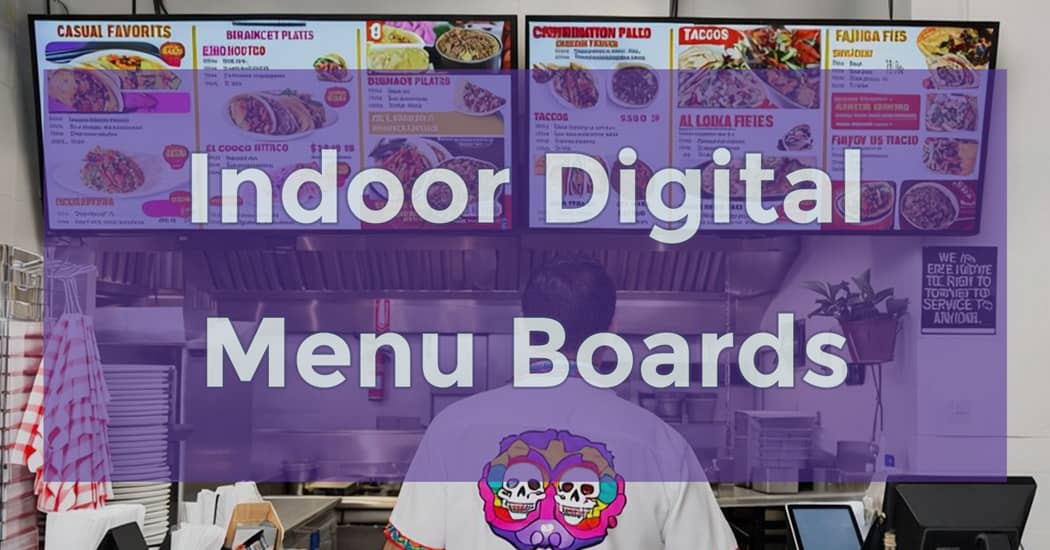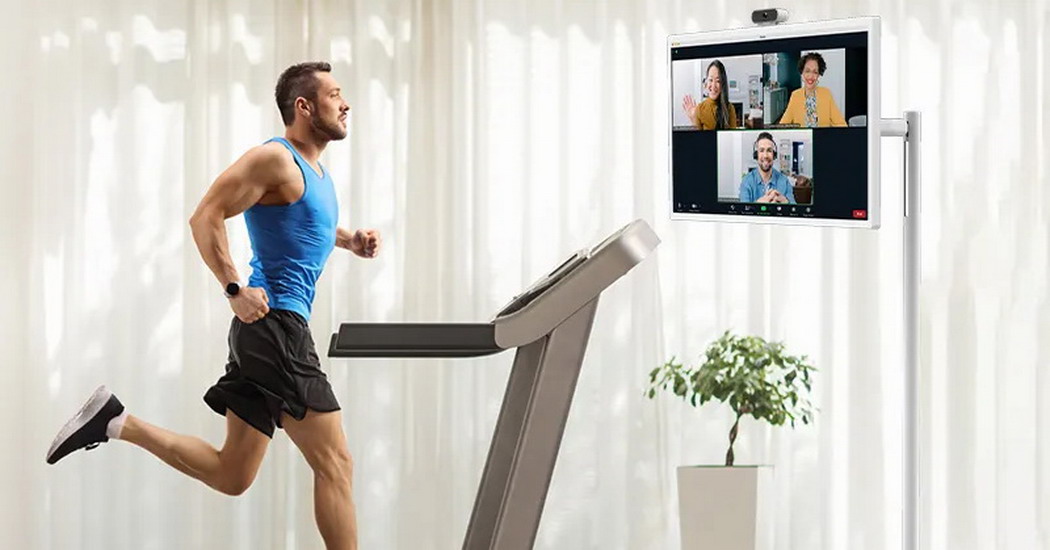
Enhancing Navigation: Freestanding Digital Wayfinding Kiosks
In today's fast-paced world, freestanding digital wayfinding kiosks are essential for enhancing navigation in complex public spaces. This article highlights their key benefits, including improved user experience and real-time updates, helping you understand why these kiosks are a must-have for modern environments.
In an era where seamless navigation is paramount, freestanding digital wayfinding kiosks stand out as pivotal tools for enhancing user experiences in complex environments. These interactive touchscreens not only provide real-time directions and maps but also cater to diverse needs with features like multilingual support and accessibility options. As shopping malls, airports, hospitals, and universities evolve into intricate spaces, these kiosks revolutionize the way we find our way around, making navigation intuitive and efficient.
What Are Freestanding digital wayfinding kiosks?
Freestanding digital wayfinding kiosks are interactive touchscreens strategically placed in public areas to help visitors navigate their surroundings. These kiosks provide real-time directions, maps, and information, often incorporating features like step-by-step guidance, searchable directories, and integration with mobile devices. They are designed to be user-friendly, accessible, and efficient, making navigation straightforward and intuitive.
Benefits of Freestanding digital wayfinding kiosks
Enhanced Navigation
Digital wayfinding kiosks provide interactive maps and real-time directions, helping shoppers easily locate stores, amenities, and services within the mall. This is particularly valuable in large shopping centers where navigating complex layouts can be challenging for visitors. The kiosks also feature a “You are here” indicator, allowing users to understand their current location and plan their route effectively.
Enhanced User Experience
Digital wayfinding kiosks significantly improve the user experience by providing clear, interactive guidance. Unlike static signs, these kiosks offer dynamic, customizable information tailored to the user’s needs. Whether it’s finding a specific store in a mall, a patient room in a hospital, or a gate at an airport, users receive precise, easy-to-follow directions.
Time Efficiency
Time is a valuable resource, especially in busy environments like airports or hospitals. Freestanding digital wayfinding kiosks help users save time by offering the fastest routes to their destinations. This efficiency reduces stress and enhances the overall visitor experience, ensuring people can reach their desired locations without unnecessary delays.
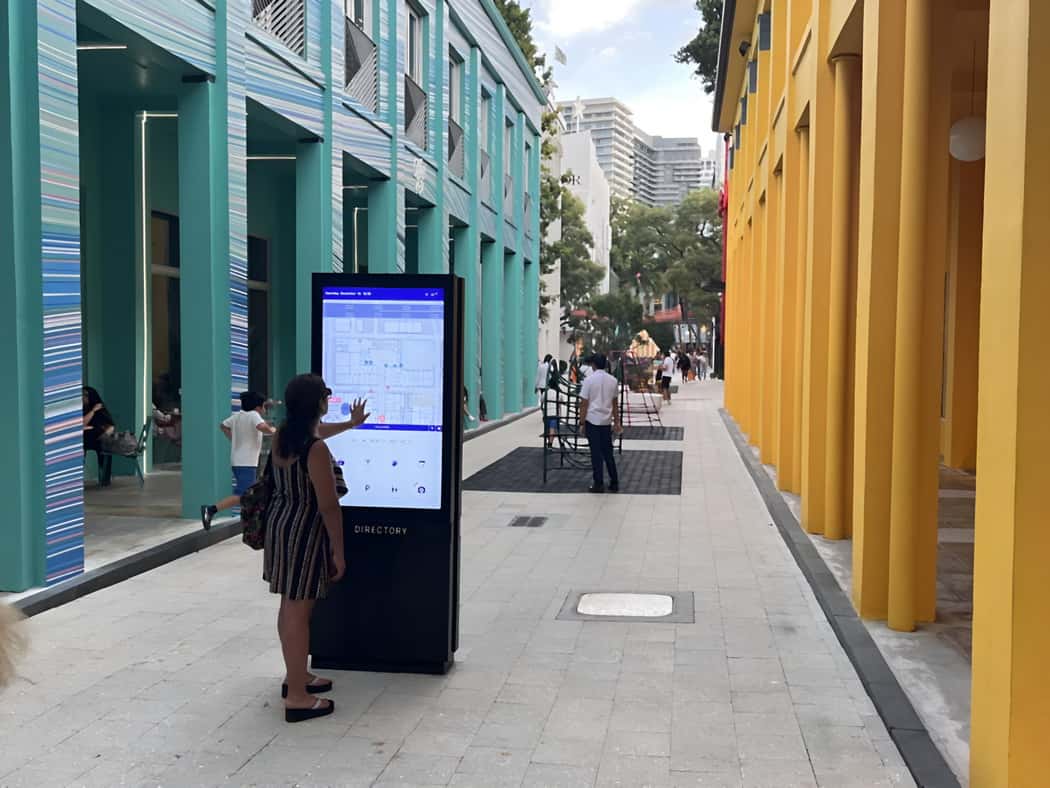
Accessibility and Inclusivity
Accessibility is a key feature of digital wayfinding kiosks. These systems can accommodate various languages, provide audio instructions for visually impaired users, and offer wheelchair-friendly routes. By catering to diverse needs, digital kiosks promote inclusivity and ensure that all visitors can navigate public spaces with ease.
More environmentally-friendly
Printing out posters that need to be updated constantly is not only less eco-friendly than having digital signage — it’s also less cost-efficient.
While the costs will be higher upfront as you install your digital wayfinding devices, in the long run, you’ll save more money. Unlike traditional, paper signage, these screens can be updated immediately, without cost, whenever you need.
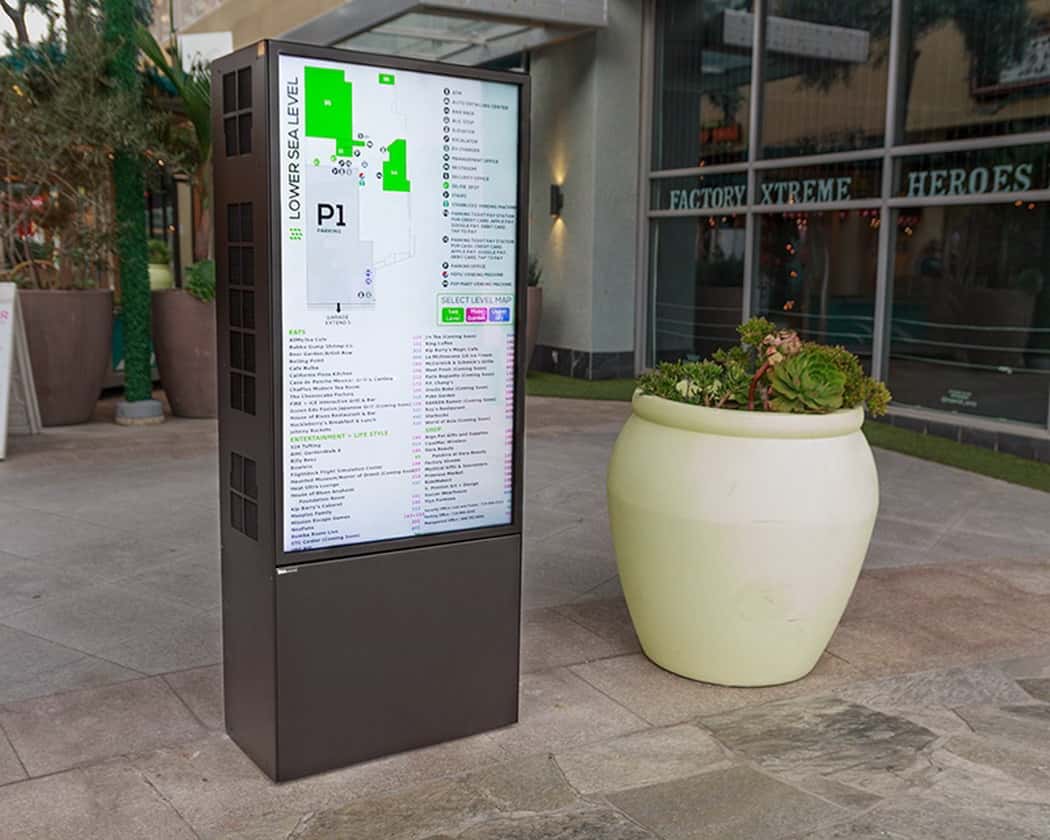
Real-Time Updates
One of the standout features of digital wayfinding kiosks is their ability to provide real-time updates. In dynamic environments where conditions can change rapidly—such as flight gate changes at an airport or event locations in a convention center—these kiosks can instantly update information, ensuring users always have the most current details.
Cost-Effectiveness
Implementing digital wayfinding kiosks can lead to significant cost savings over time. They eliminate the need for printed maps and signage, which require regular updates and maintenance. Additionally, the ability to easily modify kiosk content reduces material waste and environmental impact. The long-term benefits often outweigh initial investment costs by decreasing staffing needs for navigation assistance and increasing revenue through targeted advertising opportunities.
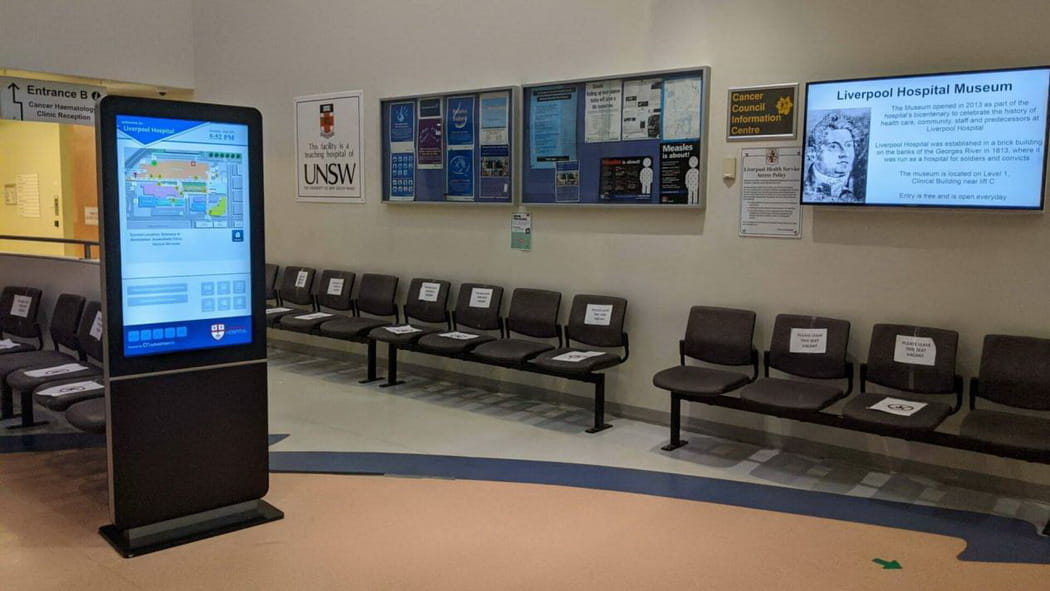
Who Benefits Most From Freestanding digital wayfinding kiosks
Places of education
Universities and colleges often use digital tools to assist visitors, students, and vendors to get around the campus more efficiently. That is undoubtedly helpful for first-year students who are still getting used to the new environment.
Digital tools can also be a great asset for the various visitors to campus who may not be familiar with the layout. Everyone can locate dorms and teaching halls with ease by using digital signage and kiosks.
Healthcare clinics and hospitals
Hospitals with large campuses can utilize digital wayfinding to allow providers, patients, and visitors alike to locate departments, wards, and rooms.
This can be particularly useful when people need emergency medical assistance or have limited mobility — the last thing they want is to get lost!
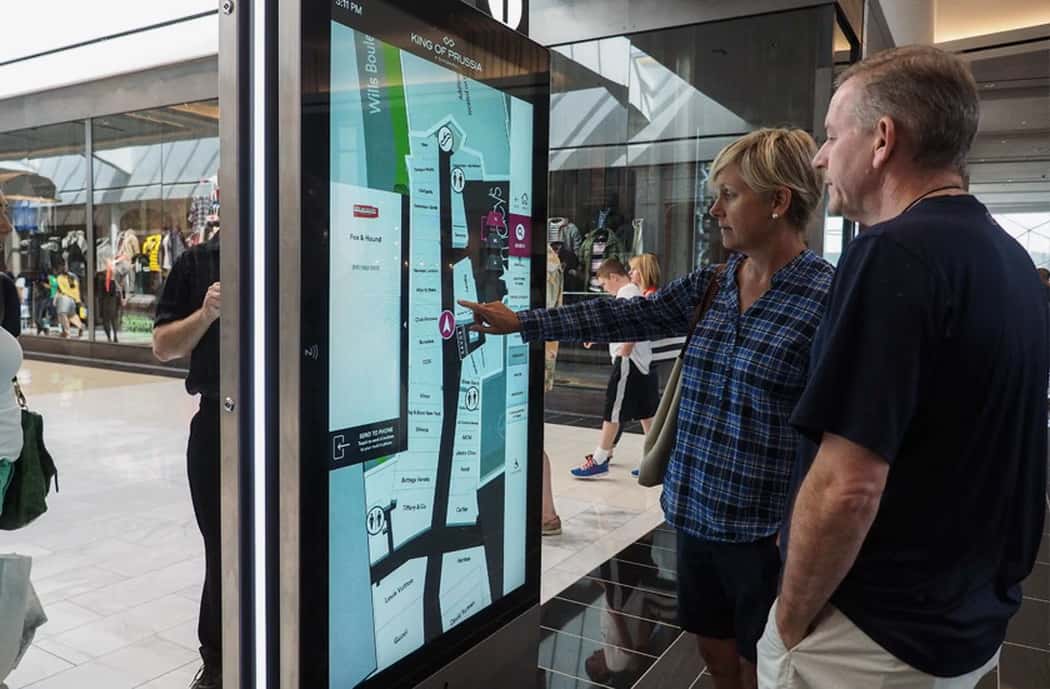
Airports and transport centers
Airports are usually large and convoluted to navigate, with long stretches between terminals.
By implementing digital wayfinding, airports can reduce the stress associated with finding your flight. This may reduce the number of passengers missing their flights.
Retailers
You’ll find that many large retailers or shopping malls have freestanding digital wayfinding kiosks to assist their customers in locating restaurants, stores, or services that best suit their preferences.
Through employing wayfinding tools, customers can adjust to a mall or department store’s layout seamlessly. They can locate things that they need faster, which leads to a better experience and increases the chances that they will return.
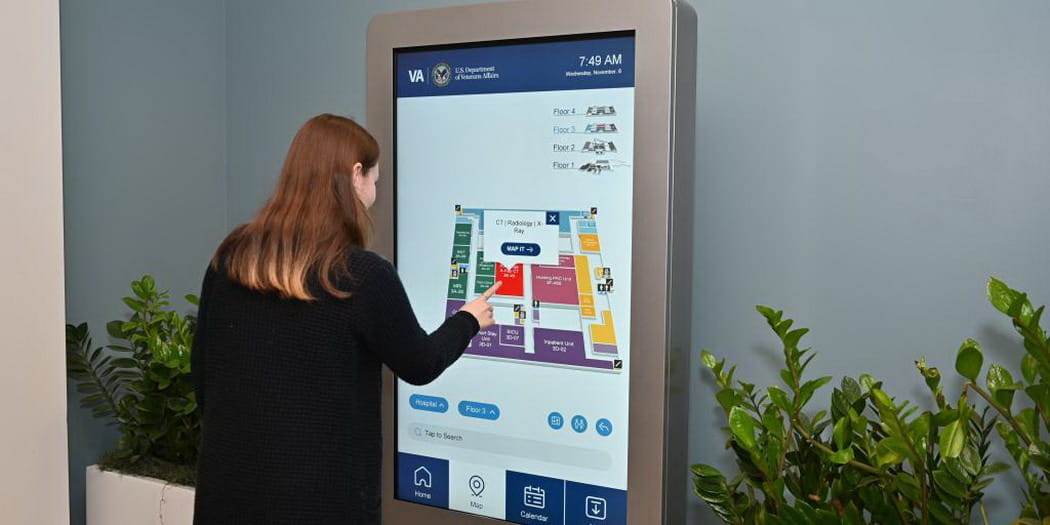
Government
Buildings owned by the government, such as DMVs and courthouses, employ digital wayfinding to help people easily locate the correct building or room in which they are supposed to be. This can avoid long queues at reception areas, and streamline the process for visitors and government officials alike.
Key Features to Look for in Freestanding digital wayfinding kiosks
User-Friendly Interface
The interface should be intuitive and easy to navigate, even for first-time users. Touchscreen functionality, clear instructions, and a responsive design are essential components.
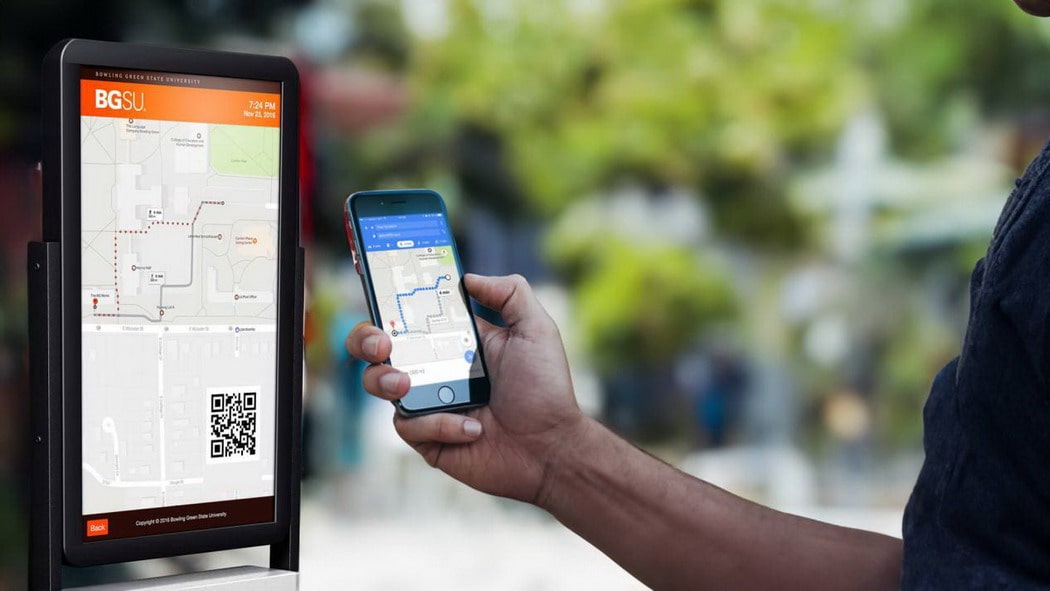
Customizable Content
The ability to customize content based on the specific needs of the location is crucial. This includes branding, language options, and the ability to highlight specific points of interest.
Interactive Maps
Interactive maps should provide zoom-in and zoom-out features, route previews, and detailed information about destinations. This ensures that users can easily understand and follow the directions.
Mobile Integration
Integration with mobile devices allows users to transfer directions from the kiosk to their smartphones. This feature is particularly useful for those who prefer to navigate using their devices.
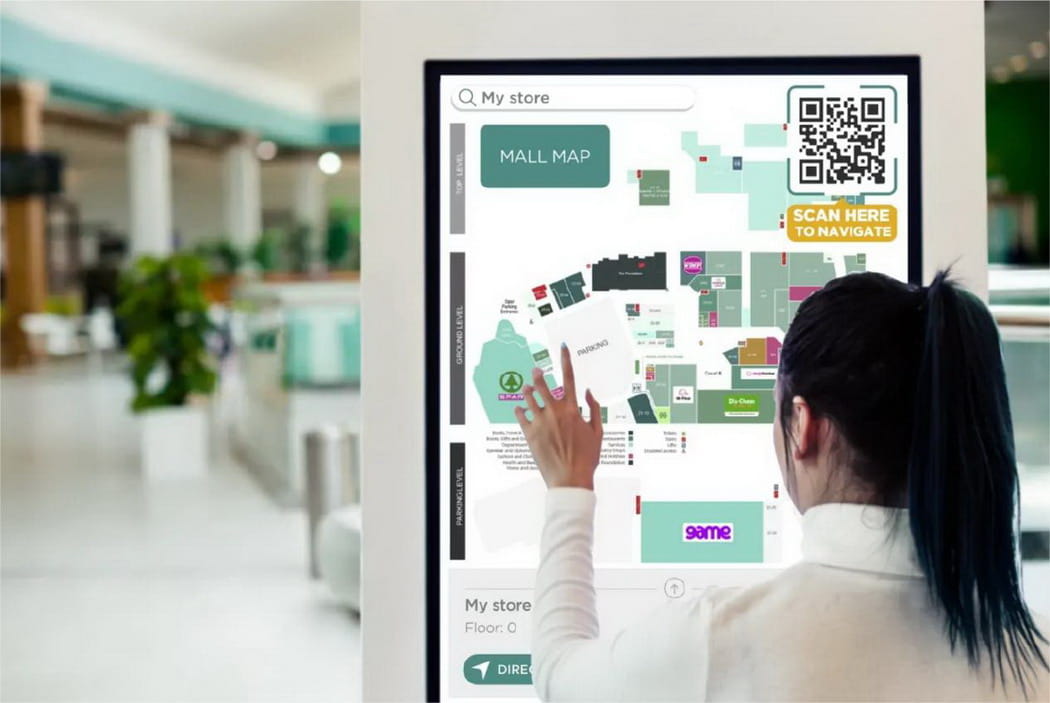
Real-Time Data Integration
The kiosk should be capable of integrating with real-time data sources to provide up-to-date information, such as flight schedules, event updates, or emergency alerts.
Accessibility Features
To ensure inclusivity, kiosks should offer features such as multiple language options, audio guidance, and wheelchair-accessible routes.
Conclusion
Freestanding digital wayfinding kiosks are reshaping how we navigate our surroundings by offering unparalleled convenience and efficiency. Their ability to provide real-time updates ensures that users have access to the most current information at all times. From shopping malls to airports and educational institutions, these kiosks enhance the overall visitor experience by reducing stress and saving time. If you’re looking to improve navigation in your space or want to learn more about implementing these innovative solutions, please contact us today! Our team is ready to help you integrate freestanding digital wayfinding kiosks into your environment for a smarter future.
Closely related post:
Latest updated post:
Latest products:


